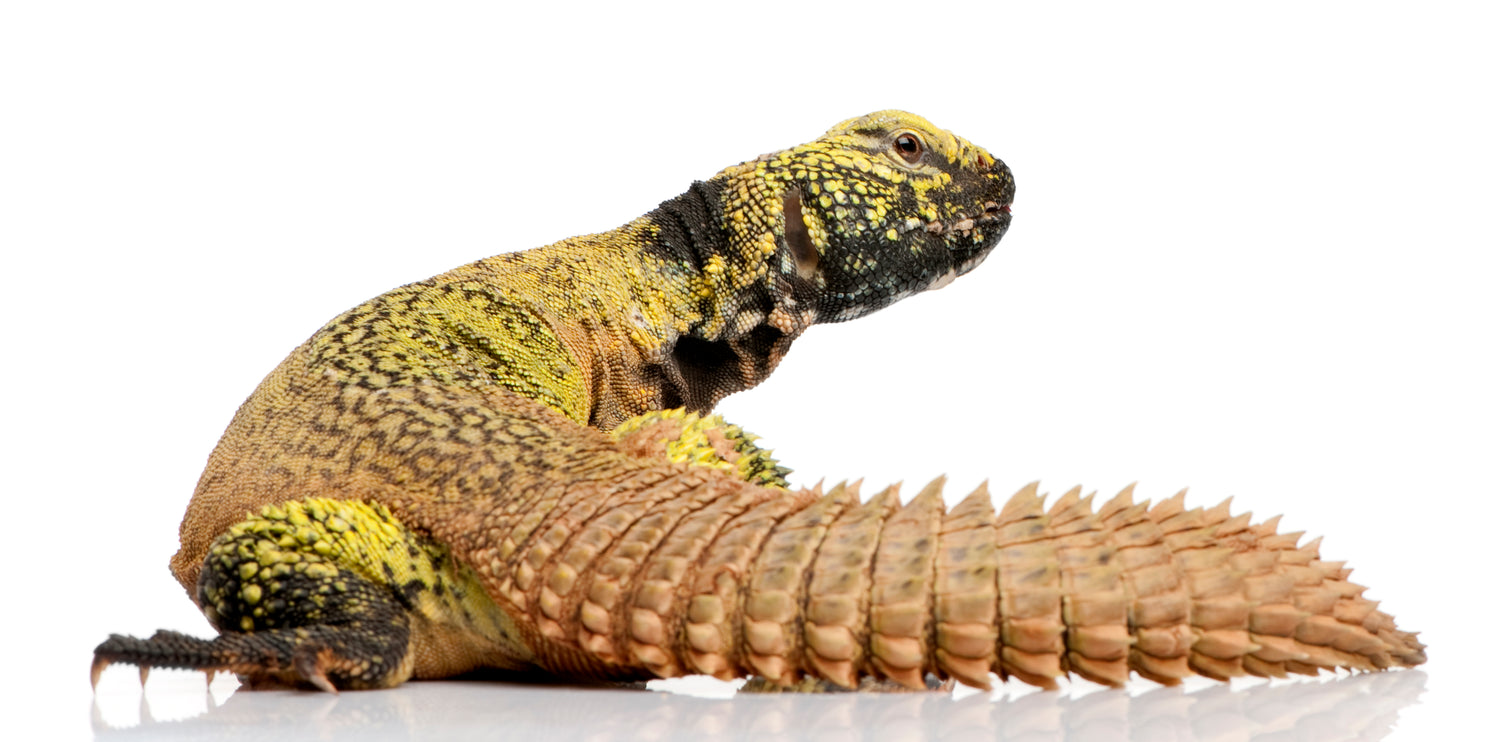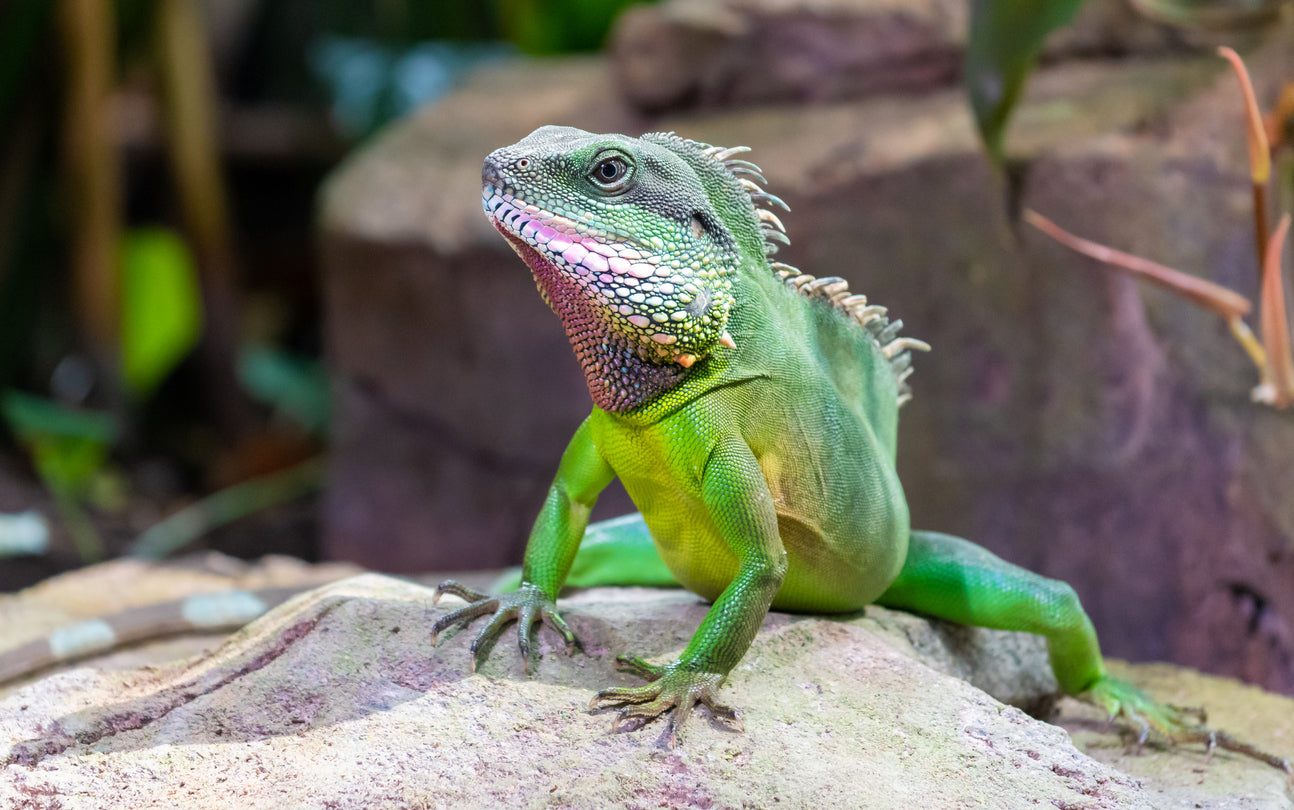The Uromastyx is a favorite reptile amongst newbie owners and experiences keepers alike; they have an easy-going attitude for their size and a friendly nature when it comes to humans. Compared to other captive reptiles, they are considerably big, due to this, their care level is deemed to be intermediate. Uromastyx are primarily herbivorous, so pretty much all their nutritions come from plants, vegetables, and fruits, as well as small amounts of lentils, beans, nuts, and seeds. Several pre-packaged diet mixes have been formulated to supplement their diet alongside fresh foods.
Fruits and vegetables all contain varying amounts of nutrients. So it is essential to learn which ones should be part of their staple diet, which ones should be more of an occasional food, and anything else that should rarely be fed or never be fed at all.
Why Are Some Things Bad For My Uromastyx?
Foods that are high in oxalates should be limited in the Uromastyx' diet; this is because oxalates bind calcium in the body, and Uromastyx needs calcium to maintain healthy bones and prevent them from certain conditions stemming from insufficient calcium intake. Feeding them too much of any oxalic foods (foods high in oxalates) will inhibit calcium absorption, which can lead to a calcium deficiency or, worse, metabolic bone disease in your Uromastyx. Another thing to limit is foods that are high in phosphorous, similar to oxalates too much phosphorous can inhibit calcium absorption and have the same effect as oxalic foods.
Goitrogenic (high in goitrogens) foods also need to be limited, goitrogens have a binding effect on iodine, and too much of these will inhibit iodine absorption into the body. Iodine is used to keep the thyroid glands functioning. Thyroid glands regulate the functions of many of the bodies vital organs, which is pretty essential! So goitrogenic foods need to be limited so that you don't run the risk of inhibiting iodine absorption into the body of your Uromastyx and cause issues with their thyroid glands.
In this guide, we shall explore the best and worst foods to offer your Uromsatyx when taking into account all these factors.
How Often Should I Feed My Uromastyx?
Juveniles (0-24 months) should be fed daily. Once they reach the adult (24+ months) stage, they can be fed a little less; you can still feed them daily if you want to cut back on the meal sizes; alternatively, you can feed them five days a week instead.
You should feed them about one or two hours after their lights have come on to give them time to warm up, give them some time to wake up and emerge from their hide. Giving them this time to warm up will aid digestion as they need to be at a specific temperature to digest. See here for our Uromastyx care sheet. Simply put the dish of food in their enclosure, and they can pick at it as and when they need to. Hand feeding them some treats is also a great idea to help them to get used to seeing you as a source of food and safety. Always remember to remove the food dish at the end of each day so that nothing goes bad or rotten.
What Do Uromastyx Enjoy Eating?
All animals, including reptiles, can have favorite foods, and the same can be said for the Uro. They may seem to like certain things more than others, and their tastes can change over time or even change due to the time of year and general temperature and weather.
To keep your pet from getting bored, it is a good idea to rotate the various foods on offer so you can keep them interested. This also allows you to monitor which ones are their favorites and take note of that. Their meals should always be mainly made up of staple items with a small amount of occasional. Treats or rare food items should only be offered once every few feedings.
Fresh flowers are a great way to supplement their diet, they seem to love them and certain ones, in particular, are good for their health, read the staple flowers list below for more information.
What Foods Are Safe For A Uromastyx:
See below for a comprehensive list of different options for your Uromastyx separated into categories. This list does not contain everything but does include the most common and easiest to find options that we could put together for you.
Staple Vegetables:
- Alfalfa (Fresh)
- Arugula
- Butternut Squash
- Chicory
- Collard Greens
- Dandelion Greens/Flowers
- Endive
- Escarole
- Hibiscus flowers and leaves
- Mustard Greens
- Nasturtiums
- Prickly Pear Cactus Pads and Fruits
- Spaghetti Squash
- Thyme
- Turnip Greens
Every two days:
- Acorn Squash
- Basil
- Cilantro
- Hubbard Squash
- Peppermint
- Scallop Squash
- Peppermint
- Rosemary
- Sage
- Summer Squash
- Watercress
Once per week:
- Artichoke Hearts
- Asparagus
- Bell Peppers
- Chayote
- Green Beans
- Kale
- Red Cabbage
- Parsnips
- Peas
- Pumpkin
Twice per month:
- Beetroot - (Goitrogenic)
- Bok Choy - (Goitrogenic)
- Broccoli
- Cauliflower - (Goitrogenic)
- Carrots
- Courgettes
- Cucumber
- Green Cabbage - (Goitrogenic)
- Kidney Beans
- Kohlrabi - (Goitrogenic)
- Lima Beans
- Okra - (High oxalates)
- Radicchio
- Radishes - (Goitrogenic)
- Turnips - (Goitrogenic)
- Wheatgrass
- Yam
Staple Fruits:
- Apples
- Cantaloupe
- Mango
- Papaya
Occasional Fruits:
- Blackberries
- Blueberries
- Cherries
- Cranberries
- Guava
- Pears
- Peaches
- Plums
- Raspberries
- Strawberries
Staple Flowers:
- Chamomile
- Chrysanthemum Petals
- Dandelions
- Hibiscus
- Hollyhock
- Lavender
- Marigold
- Nasturtium
- Rose Petals
Fresh greens and vegetables should be offered for every feeding; fruit should only make up about ten percent of their total diet; being high in sugar fruit can lead to obesity and other related health problems. Lentils and beans can be fed two to three times per week to add some variety in their diet, and seeds four or five times per week. Fresh flowers that you want to feed can be purchased in stores, or you can pick them outside as long as you thoroughly wash them, and you are confident they are pesticide-free.
Appetite stimulants are useful if you have a picky eater, or you simply want to make their diet more interesting. See below for some options for great appetite stimulants.
Foods To Never or Rarely Feed Your Uromastyx:
Generally, the following foods should be avoided altogether, although they could be fed rarely, you could feed them very occasionally but only once per month at most.
- Beet Greens - (Goitrogenic)
- Brussel Sprouts - (Goitrogenic)
- Corn - (High phosphorous)
- CornCitrus - (Oranges, Lemons, Limes, Grapefruit, etc.) (Extremely acidic)
- Lettuce - (High water content, barely any nutrition)
- Parsley - (High oxalates)
- Tomatoes - (Extremely acidic)
- Soybeans
- Spinach - (High oxalates)
- Swede - (Goitrogenic)
- Swiss Chard - (High oxalates)
- Swede - (Goitrogenic)
Pre-Packaged Commercial Diet Mix
There are several products on the market that have been prepared to be a staple part of your Uromastyx' diet. Certain high-quality has been formulated by experts over time to provide a balanced range of nutrition, vitamins, and minerals to your reptile and can be easier than having to chop up and prepare their salad.
They are best used alongside fresh foods but can make an excellent appetite stimulant and general nutrition supplement to keep your Uromstyx happy and healthy. Iguana food mixes are some of the best that also work for Uromastyx, with them both being vegetarians of sorts.
These are also ideal for keeping around for whenever they maybe some kind of emergency that means you are unable to obtain fresh veggies and fruit for your Uromstyx; see below for some high-quality examples of these.
- Zilla Reptile Munchies Vegetable Mix
- Zilla Reptile Munchies Vegetable and Fruit Mix
- Zilla Reptile Munchies Fruit Mix
- Zilla juvenile Iguana pellets
- Zilla Adult Iguana pellets
Supplements
Supplements are a necessary aspect of pretty much any reptile's diet, and the same can be said for the Uromastyx. Even though they do eat live bugs, it is still advised to use the same supplements that you would usually use to dust the feeders of other reptiles that do need live bugs in their diet. The three main supplements which you need are calcium powder without D3, calcium powder with D3, and a multivitamin powder. Use the following schedule to rotate your supplements:
Babies (0-12 months)
- Calcium no D3 - 3 x per week
- Calcium plus D3 - 1 x per week
- Multivitamin 1 x per week
Juveniles (12-24 months)
- Calcium no D3 - 3 x per week
- Calcium plus D3 - 1 x per week
- Multivitamin - 1 x per week
Adults (24+ months)
- Calcium no D3 - 2 x per week
- Calcium no D3 - 1 x per week
- Multivitamin - 1 x every two weeks
Always remember to rotate the supplements, so the same supplement is not given on consecutive days. Only dust their food very lightly, just a pinch is fine.
Below are recommended products to use for supplementation for your Uromastyx
- Repti-Calcium without vitamin D3
- Exo-Terra Calcium Powder without D3
- Exo-Terra Calcium Powder Plus D3
- Zoo Med Calcium Powder Plus D3
- Exo-Terra Multivitamin Powder
- Rep-Cal Multivitamin Powder
TOXIC FOODS FOR UROMASTYX
For various reasons, some may be toxic, some high in oxalates or phosphorous, others high in goitrogens, these foods should just be avoided. If they are consumed accidentally by your Uromastyx, you should seek veterinary attention and at least consult them on what the best course of action will be.
- Avocado
- Azalea
- Bracken Fern
- Buttercup
- Castor bean
- Chives
- Daffodils
- Eggplant
- Garlic
- Juniper
- Leeks
- Mushrooms
- Potato or tomato leaves
- Rhododendron
- Rhubarb
Water & Hydration
The Uromastyx is one reptile that doesn't generally need a source of water in their enclosure. However, certain foods in their diet are higher in water than others, and if you are using, for example, a dry food mix in their meals; then it is a good idea to have a bowl of water in their tank for them to drink from should they need it.
With baby to juveniles Uromastyx, it can be a good idea to put water in a dish and leave it in their enclosure anyway as they need to be kept well-hydrated. Issues with dehydration can affect them faster than when they are adults.
If you notice that your Uromastyxs stool is hard or chalky, then increase the amount of food with hydration in it, or offer a bowl of water in their tank to add some hydrations. You should replace any water placed in their tank either daily or whenever they have made a mess of it. To treat and dechlorinate the water, you offer your Uro see below.



2 comments
Reptile Supply
Hi Susan — Yes, uromastyx can eat romaine on an occasional basis.
Susan Millin
Can my uro eat romaine? He seems to like it best over his spring mix.
Leave a comment
All comments are moderated before being published.
This site is protected by hCaptcha and the hCaptcha Privacy Policy and Terms of Service apply.